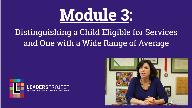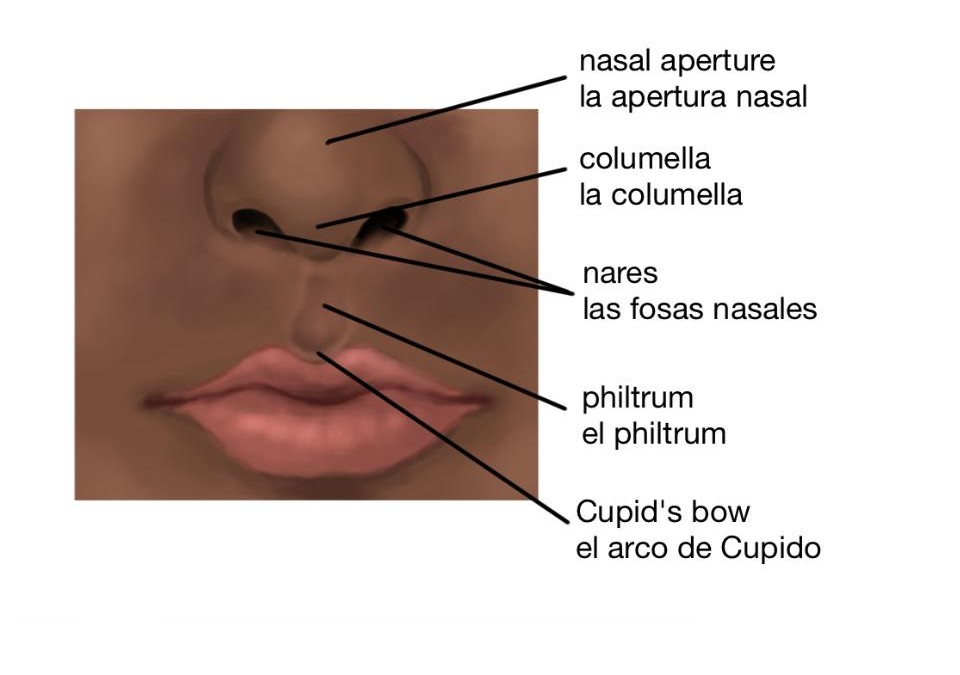
by Kristin | Aug 27, 2016
In the third module of this series, Cate looks at the NYSDOH Communication and Motor Clinical Practice Guidelines and uses case study videos of young children to demonstrate how detailed observation and informed clinical opinion can be powerful tools in doing an EI evaluation. Using observation of real children’s behavior, she guides the viewer through the steps for distinguishing a child eligible for EI services from a child in the wide range of “normal”.

by Kristin | Aug 27, 2016
In the fourth module of this series, Cate explains the importance of parents as partners in EI disability evaluations. She presents research-based Critical Questions that evaluators can use to gather useful information from caregivers when evaluating a child, including information about the child’s language and dialect acquisitional history. Cate also presents the case of a 2.8-year-old boy, Alex, to demonstrate how to use the clinical questions to gather information and write up a quality EI evaluation.

by Kristin | Aug 27, 2016
In the fifth module of this series, Cate discusses characteristics of a quality Early Intervention evaluation. She explains that evaluators must include specific data learned during the assessment and make “vignettes” or “holograms” paint a picture of the child. Then, she guides us through cases of real children, demonstrating how to use informed clinical opinion to make rich observations about their communicative, cognitive, and motor functioning. Finally, Cate gives examples of what a “vignette” or “hologram” looks like in a written evaluation.

by Kristin | Aug 27, 2016
In the sixth module in this series, Cate presents research on bilingualism in children 0-3 years of age and explains when a bilingual evaluation is necessary in Early Intervention. She goes over essential skills that every bilingual evaluator should have and talks in-depth about how to work with an interpreter in a culturally and linguistically appropriate way. Finally, Cate presents case studies of bilingual children under the age of 3 that demonstrate the influence of bilingualism on early language development.

by Kristin | Aug 27, 2016
In the seventh and final module in this series, Cate provides information on Childhood Apraxia of Speech and discusses the recent over-diagnosis of this speech disorder in NYC Early Intervention. Then, she presents various examples of EI Apraxia evaluation write-ups and talks us through the differences between high and low quality reports.

by Kristin | Apr 20, 2016
Aqui vemos la anatomía de la boca, los labios y la lengua para apoyar el conocimiento de como producimos los sonidos del habla.
by Kristin | Apr 20, 2016
En este documento se explica como hacer la terapia del habla con el niño después de la cirugía para reparar el paladar hendido.
by Kristin | Apr 20, 2016
A veces hay que esperar para hacer la cirugía en niños con paladar hendido. En este documento explica que se puede hacer con el niño antes de la cirugía para apoyar al desarrollo correcto del habla.
by Kristin | Apr 20, 2016
Este documento incluye una evaluación de todos los sonidos del habla. También describe como hacer un análisis de los sonidos para identificar cuales sonidos son estimulables para terapia.
by Kristin | Apr 20, 2016
Este documento da las preguntas más importantes para los padres de un niño con paladar hendido durante una evalución.







![[feed link]](/wp-content/plugins/rss-just-better/rss-cube.gif)